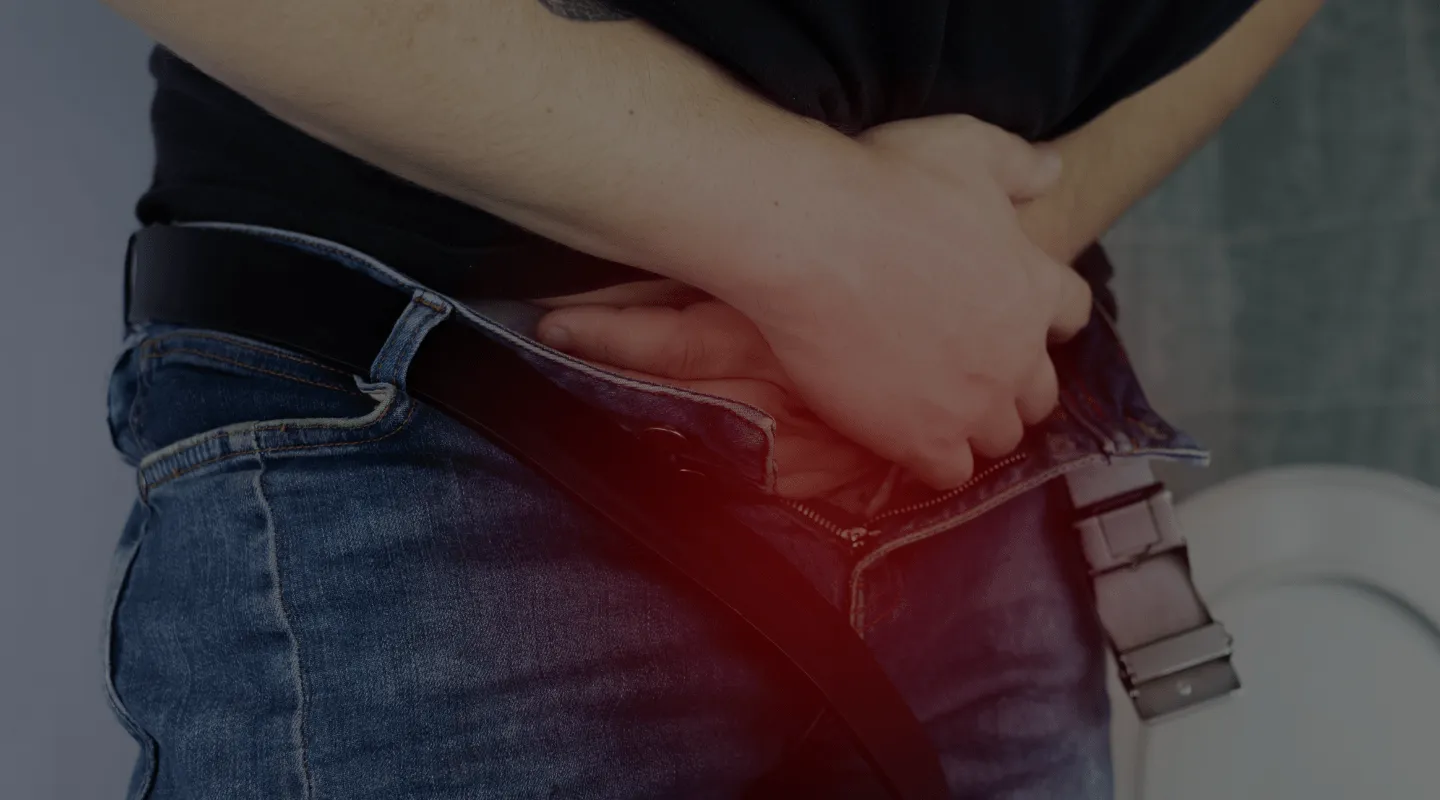
Prostate Resection-Vaporization
Your Prostate Resection-Vaporization in Tunisia at an Affordable Price
Opt for a medical stay with Tunisia Destination Santé and benefit from the expertise of our specialist doctors and the best healthcare facilities in Tunisia. Thanks to our tailor-made service, you will benefit from comprehensive support in a secure and comfortable environment.
How does it work?
What does prostate resection-vaporization involve?
Benign prostatic hyperplasia refers to an increase in the size of the prostate. With age, the central part of this gland tends to enlarge excessively, causing compression and pressure on the urinary canal and the outer part of the gland. Over the years, this hypertrophy can even reach the size of an orange. Common symptoms of benign prostatic hyperplasia include not only an increase in the frequency of urination during the day and night, but also a feeling of incomplete emptying, interrupted urination, and even acute urinary retention. TURP (transurethral resection of the prostate adenoma) involves removing a portion of the prostate through the urethra. This procedure has the advantage of being minimally invasive, i.e. it avoids surgical incisions, and allows for faster post-operative recovery. New techniques have been developed to reduce the volume of the hypertrophied prostate, but some have not yet been sufficiently tested to establish their definitive effects. They involve different methods of removing part of the glandular tissue, including prostatic vaporization, which is particularly well-known. The prostate vaporization process uses a state-of-the-art 180-watt laser, with a fiber inserted into the prostate gland. Thanks to the absence of bleeding, this method is recommended for patients with heart problems and taking anticoagulants, thus offering reliability and speed. Moreover, it allows for hospitalization of only 24 hours and a quick return to social life, making it a highly sought-after option in specialized centers.
What is the average price of prostate resection-vaporization in Tunisia?
Want to know more about the cost and procedure of prostate resection-vaporization in Tunisia? No worries, our rates adapt according to the surgical technique chosen and the extent of the operation. Feel free to request a personalized and free quote on our website to get all the necessary information.
Your health, our priority.
Request your free quote.
How does the prostate resection-vaporization procedure take place?
This procedure involves removing the central part of the prostate gland through the urethra. The surgeon uses an instrument that uses specific electrical energy to “cut” the prostate tissue. The procedure usually requires regional or general anesthesia and lasts between 25 and 60 minutes. After prostate resection, it is common to place a three-way bladder catheter to remove blood and clots present in the bladder cavity through continuous irrigation. In some situations, the catheter is put under traction for a few hours to increase its hemostatic effect and better control post-operative bleeding. This device is removed once the urine becomes clear, usually between 24 and 48 hours after surgery. Generally, if all goes well, the catheter is removed after about 3 to 4 days. Generally, patients stay in the hospital for about 4 to 5 days. During a prostate vaporization resection procedure, the patient will be put to sleep with general or spinal anesthesia. The doctor will use a laser resectoscope to access the bladder through the urethra, without requiring incisions in the abdomen. This instrument is equipped with a laser to vaporize tissues and a camera that displays high-definition images of the prostate on a screen. During the procedure, the laser produces a lot of heat on a part of the prostate resembling a tip. As a result, the tissue begins to vaporize. In this way, a large part of the prostate can be treated.
What are the usual post-operative follow-ups after prostate resection-vaporization?
To facilitate healing after leaving the hospital, a period of convalescence is recommended. This involves reducing stressful physical activities, limiting sexual and sporting activities, following a moderate diet, and taking an anti-infective treatment for the urinary tract. In addition, it is advisable to abstain from any normal professional activity for at least 7 to 21 days, depending on the circumstances and extent of the prostatectomy. It is also best to avoid long car journeys, as well as the use of bicycles and motorcycles during this period. The first follow-up after the operation should be done within 30 to 45 days, unless there are special circumstances, as this is largely adequate. Following prostate vaporization resection, you may see traces of blood in your urine or feel pain when urinating after the procedure. These symptoms may last for several weeks.
For 4 to 6 weeks after surgery, it is recommended to:
- Drink 1 to 2 liters, mostly water, per day.
- Do not lift weights exceeding 5 kg.
- Do not exert excessive effort and avoid cycling.
- Avoid thermal baths or saunas
- An excellent way to avoid constipation is to adopt a healthy diet.
- Have your doctor prescribe medication
- Recommend abstaining from intimate relations for 2 to 3 weeks.
After being exposed to laser treatment, you may experience side effects such as retrograde ejaculation. This chronic condition prevents sperm from being ejected through the urethra during orgasm, instead directing it towards the bladder and releasing it during urination.
If the patient experiences the following symptoms, they should immediately contact their doctor:
- Fever
- Difficulty urinating alone
- Presence of blood loss or pain.
What are the results generally observed after prostate resection-vaporization?
Prostate vaporization resection provides the best objective results:
- increased urinary flow strength,
- reduction in post-void residual
- reduction in obstruction compared to alternative therapies thanks to the improvement in maximum urinary flow by 120-125% and reduction in post-void residual by 70%.
It is estimated that about 1 to 6.6% of the population is affected by urinary incontinence, to varying degrees. This condition usually manifests as “stress” incontinence, which occurs during a sudden increase in intra-abdominal pressure, such as coughing, sneezing, laughing, or lifting weights. Total incontinence is rare. It is often caused by damage to the external urethral sphincter and can be corrected, depending on its severity, by endoscopic surgery or the placement of long-term prostheses.
Our advantages


Contact and request a quote for prostate resection-vaporization
The Tunisia Destination Santé staff is entirely at your disposal to assist and support you in all the necessary steps to organize this procedure. We will be by your side throughout the process, whether it is for the preparation of your file or for the planning of your stay. Feel free to contact us for more information and to request a free, no-obligation quote.
—
Frequently Asked Questions
Prostate resection-vaporization combines two techniques: resection (which involves removing tissue) and vaporization (which uses energy to vaporize tissue). This method allows for efficient reduction of prostate tissue with minimal risk of bleeding and faster recovery compared to other techniques.
For patients with comorbidities such as heart disease or coagulation disorders, prostate resection-vaporization is advantageous because it minimizes the risk of bleeding and postoperative complications, making the procedure safer for these patients.
Recovery after prostate resection-vaporization is generally faster than for other procedures. Patients can often resume light activities within a few days and most normal activities within a few weeks. It is important to follow medical advice to avoid strenuous physical activity during the recovery period.
While there are no strict dietary restrictions, it is recommended to maintain a balanced diet and drink plenty of water to facilitate healing and avoid constipation, which can put pressure on the operated area.
Most patients do not notice significant changes in their long-term sexual function. However, some may experience retrograde ejaculation, where sperm enters the bladder instead of exiting through the penis. This does not affect sexual pleasure or orgasm.
Most patients regain normal urinary continence after the procedure. However, it is possible to have temporary incontinence immediately after surgery, which usually resolves over time with pelvic floor strengthening exercises.
Prostate resection-vaporization provides lasting results. However, as BPH is a progressive condition, some patients may require further intervention after several years if symptoms reappear.
Although rare, complications may include infections, significant bleeding, urethral strictures, or bladder problems. Appropriate medical follow-up and open communication with the doctor can help manage and minimize these risks.
Prostate resection-vaporization is primarily used to treat BPH. For chronic prostatitis, other treatments, such as antibiotics and anti-inflammatories, are usually more appropriate. However, the procedure may improve associated urinary symptoms.
Drug treatments can be effective in managing BPH symptoms at an early stage. However, for patients with severe symptoms or those who do not respond to medication, prostate resection-vaporization offers a more definitive and often more effective solution.
